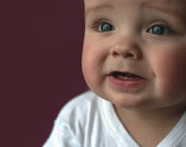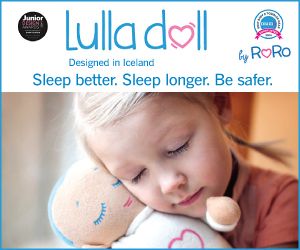Tooth Care

A helpful guide to caring for your child’s teeth whether they are a baby or a toddler
Young children are not able to clean their own teeth. As a parent, you must do it for them when they are very young and do it with them, as they get older. When your child can write (not print) his or her name, your child is ready to do a good job brushing. You should check to make sure your child does a good job. You should start cleaning your child’s mouth even before your child has teeth. It gets both you and your child into the habit of keeping the mouth clean, and it gives baby (or primary) teeth a clean place to come into. The goal is to wipe all parts of the gums and teeth.
For babies…
- Lie your baby in a comfortable place.
- Make sure you can see into your baby’s mouth.
- Use a soft baby brush or wrap your finger in a clean, damp washcloth. Then, brush or wipe your baby’s gums and teeth.
- Do not use toothpaste until your child has teeth.
Once your child has teeth…
Step 1: Hold the toothbrush at a 45-degree angle to the teeth. Point the bristles to where the gums and teeth meet.
Step 2: Use gentle circles. Do not scrub. Clean every surface of every tooth. For the front teeth, use the “toe” or front part of the brush. The key word is gentle. You can hurt the gums by brushing too hard.
Toothbrushes and toothpaste
The best kind of brush is soft, with rounded bristles. It should be the right size for your child’s mouth. You will need to buy a new toothbrush at least every 3 or 4 months.
Children can be hard on toothbrushes. If the bristles get bent or worn down, they will not do a good job, and may hurt your child’s gums.
Make sure the toothpaste has fluoride. Check the box or tube for the symbol of the Canadian Dental Association. This symbol means the toothpaste has fluoride. Use only a bit of toothpaste, about the size of a pea, and make sure your child spits it out.
As excessive swallowing of toothpaste by young children may result in dental fluorosis, children under 6 years of age should be supervised during brushing and only use a small amount (e.g. pea-sized portion) of toothpaste.
Children under 3 years of age should have their teeth brushed by an adult using only a smear of toothpaste.
How to floss
Step 1: Take a piece of floss about as long as your child’s arm. Wrap it around your middle fingers, leaving about 2 inches between the hands. Use your index fingers to guide the floss between the teeth.
Step 2: Slide the floss between the teeth and wrap it into a “C” shape. It should wrap around the base of the tooth, where the tooth meets the gum.
Step 3: Wipe the tooth from bottom to top 2 or 3 times or more, until it is squeaky clean.
Be sure you floss both sides of each tooth, and don’t forget the backs of the last molars.
Move to a new part of the floss as you move from tooth to tooth.
Should my child always brush right before bed?
Yes. If you don’t get rid of the germs (bacteria) and sugars that cause cavities, they have all night to do their dirty work. Plus, when your child is asleep, he or she does not produce as much spit (or saliva). Saliva helps keep the mouth clean. So brushing at bedtime is very important.
Pacifiers and Thumb Sucking
It is normal for babies to suck because it helps them relax. By the time your child is two or three years of age, he or she has less need to suck. If your child still likes to suck, a soother is better than sucking a thumb. Why? Because you can control when and how your child uses a soother. You can’t control a thumb going into the mouth.
Never put sugar, honey or corn syrup on a soother. They can cause cavities. It’s best to get your child to stop sucking before permanent teeth come in, at about age five. If a child keeps sucking a soother or thumb after the permanent teeth have come in, it could cause problems with how the jaw and teeth grow.
For more information please visit www.cda-adc.ca



